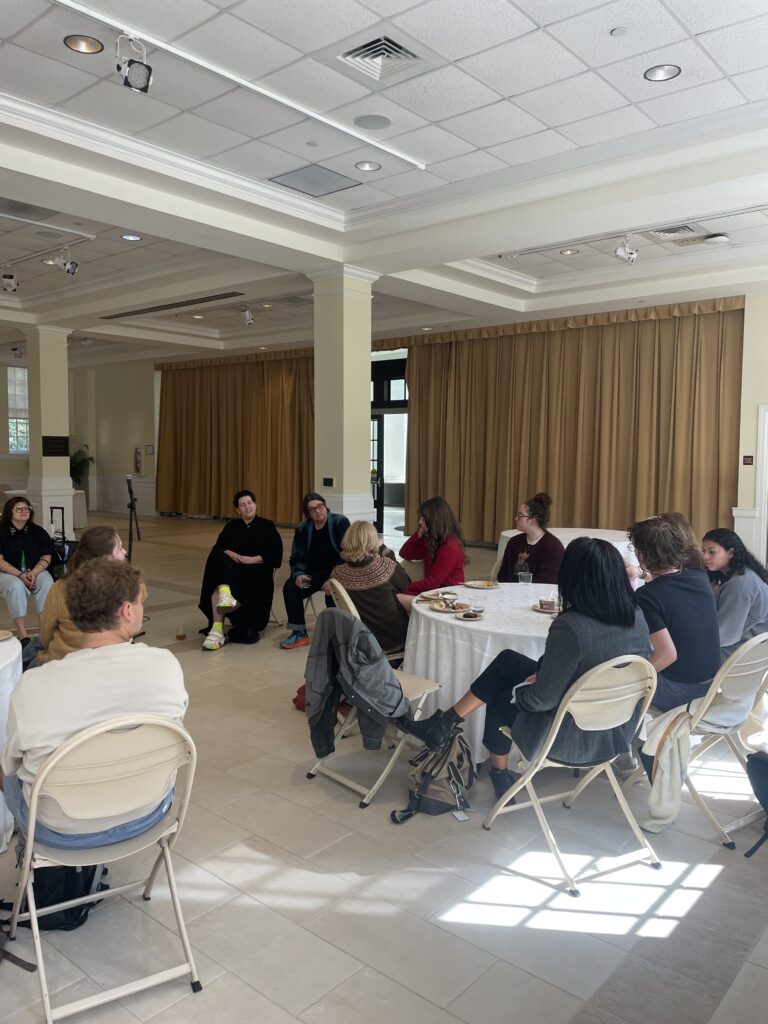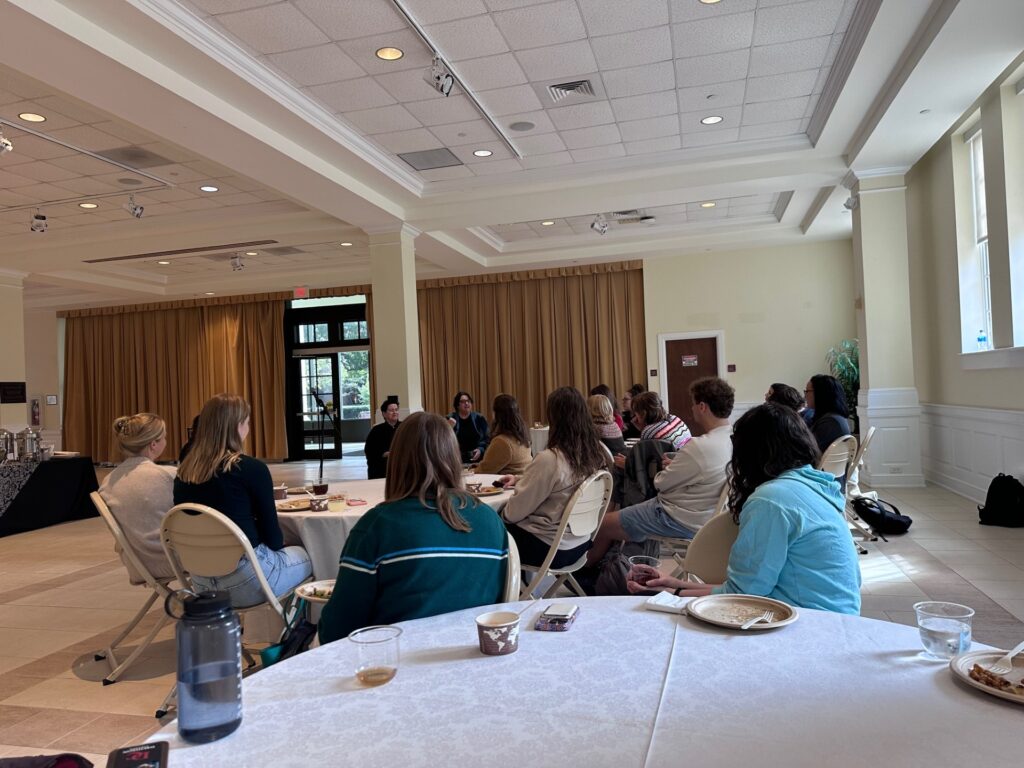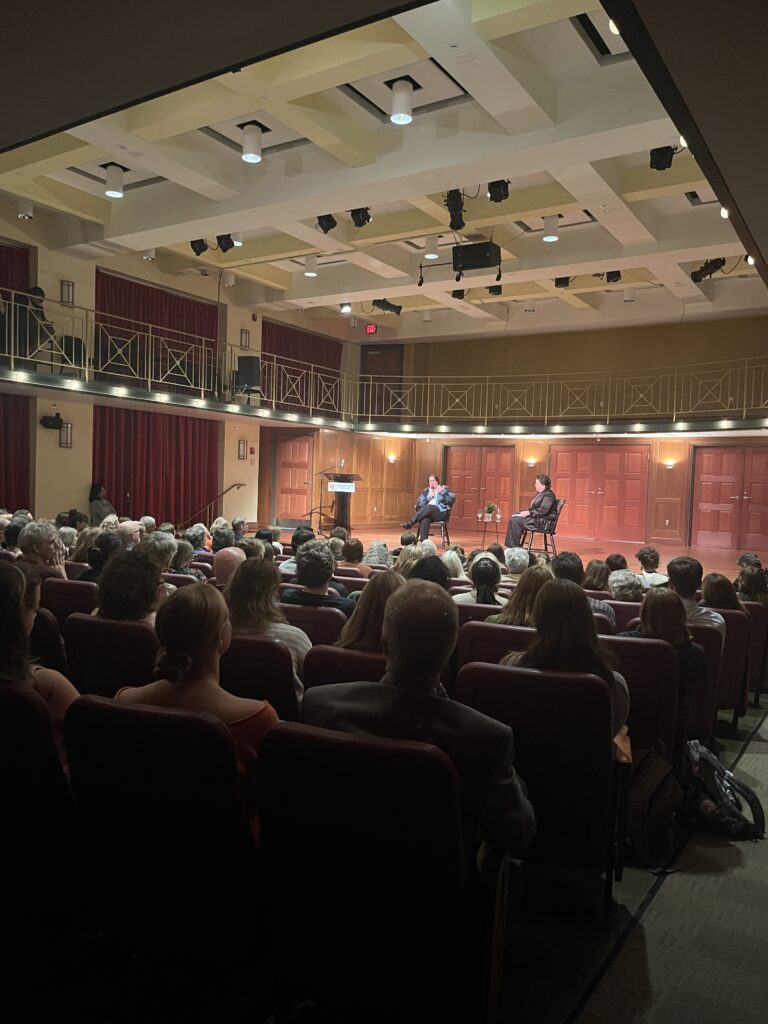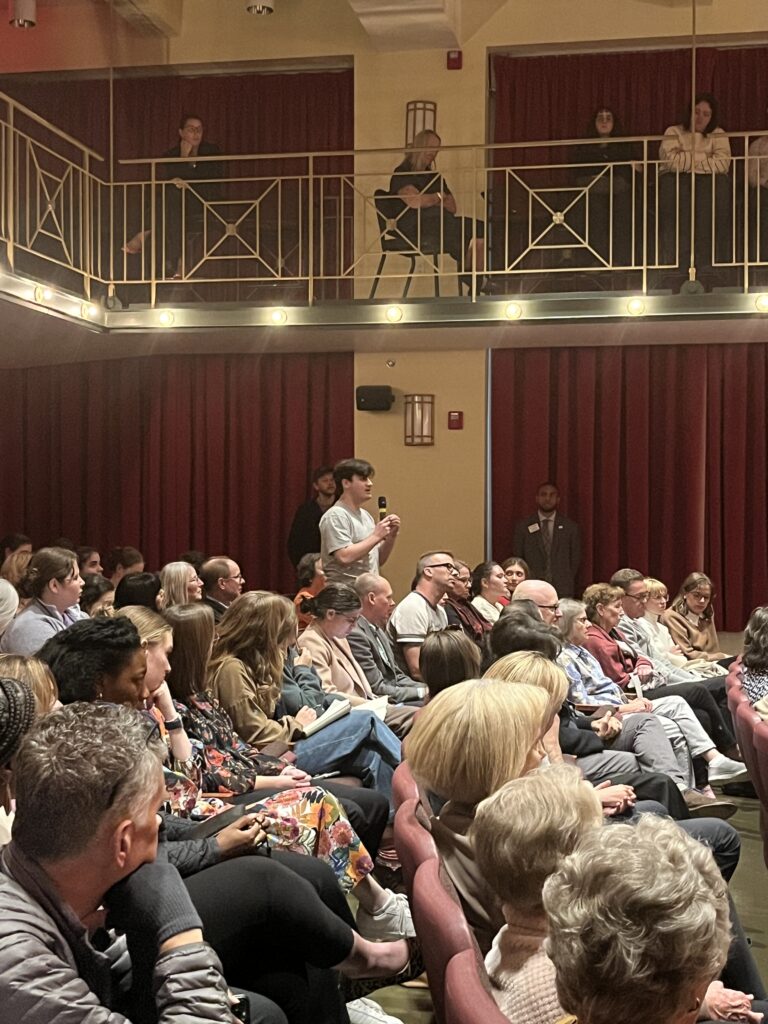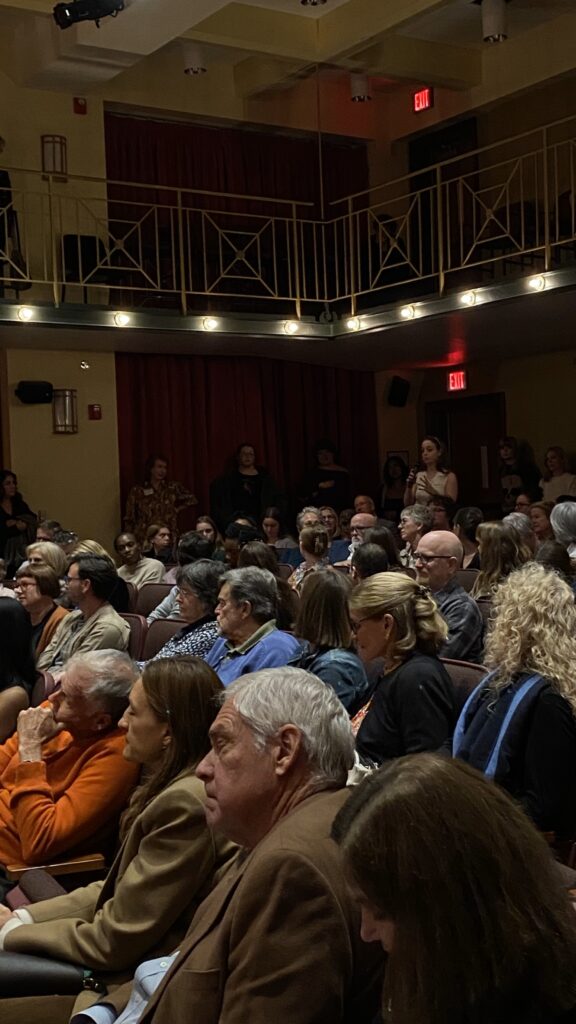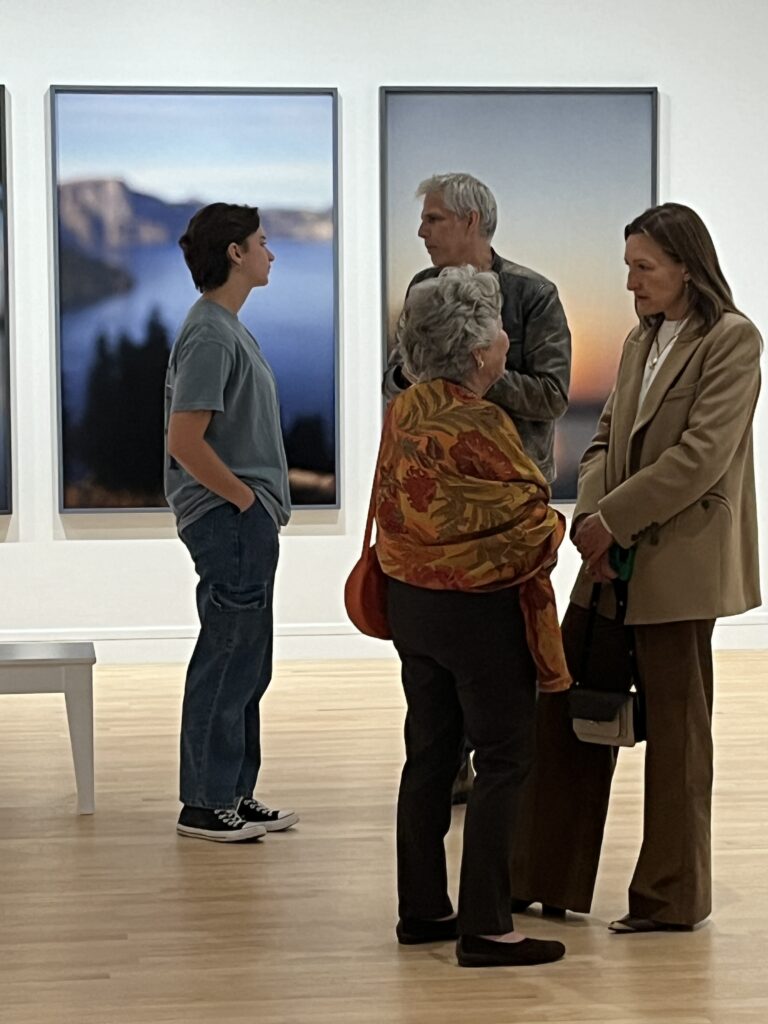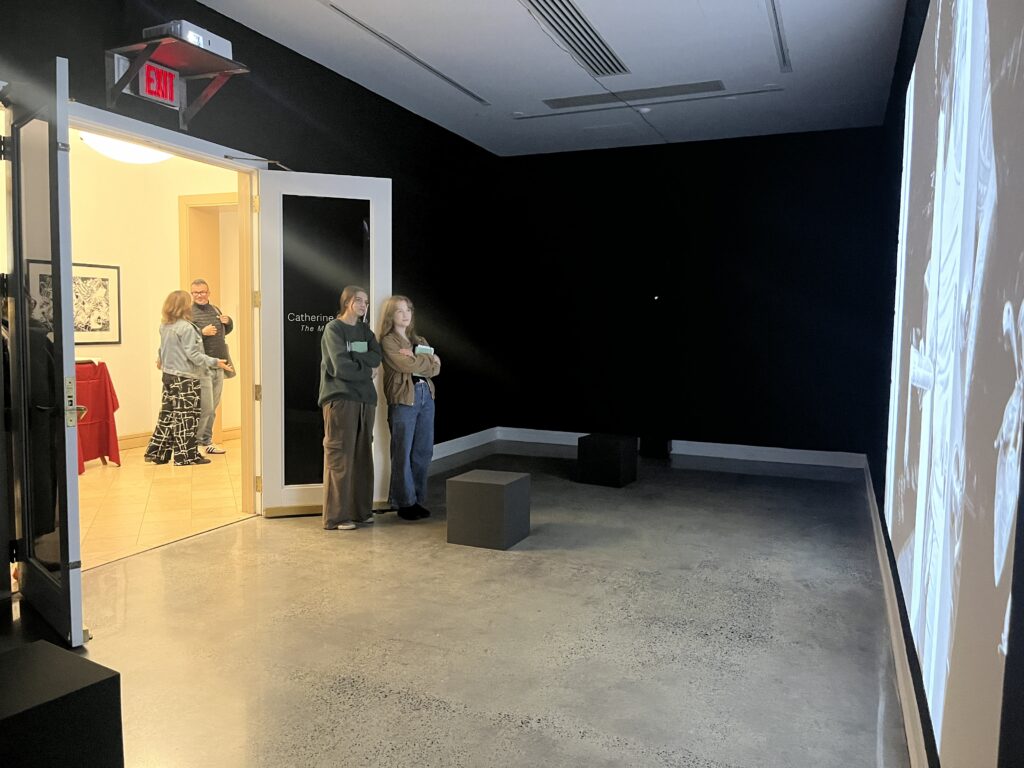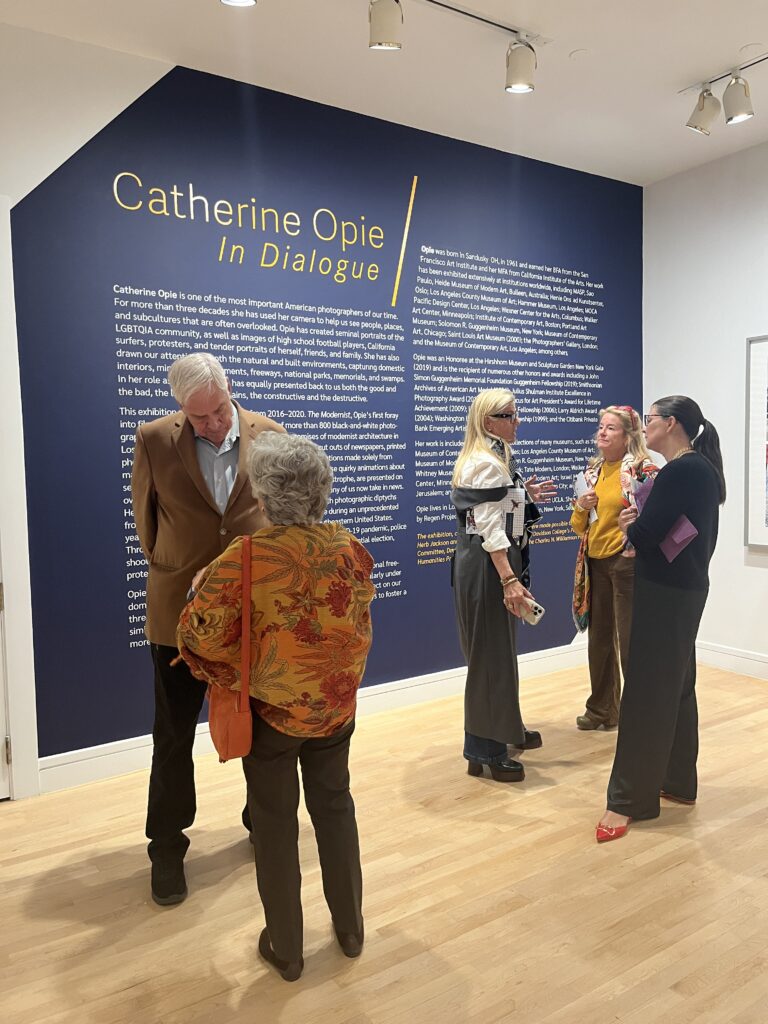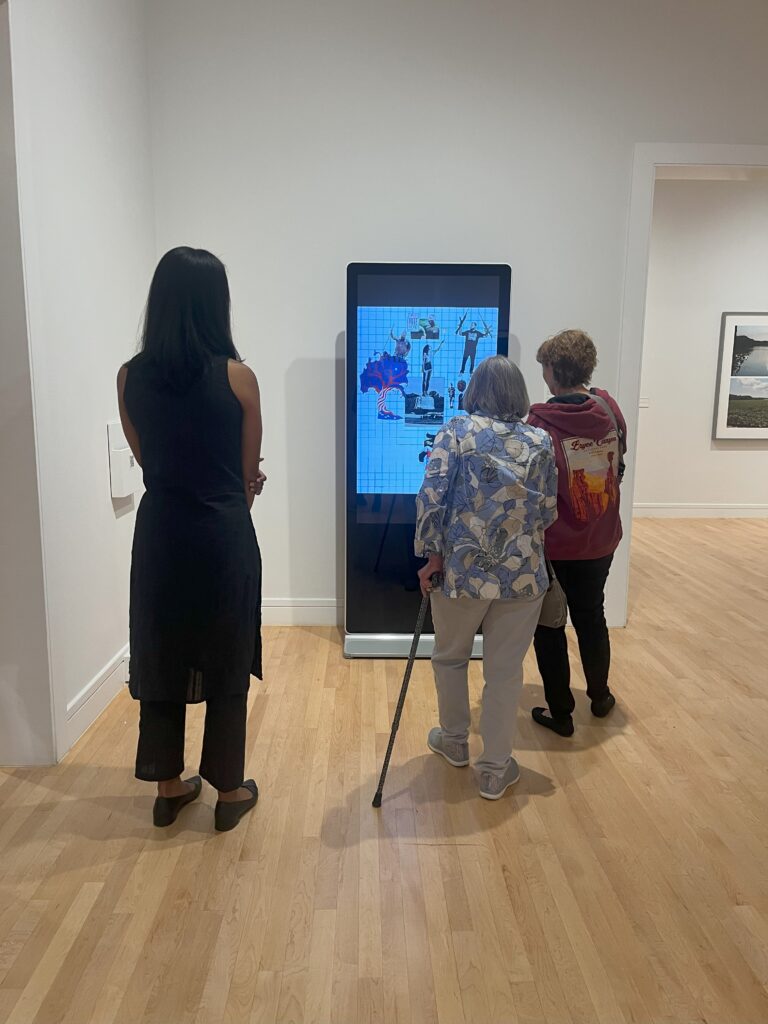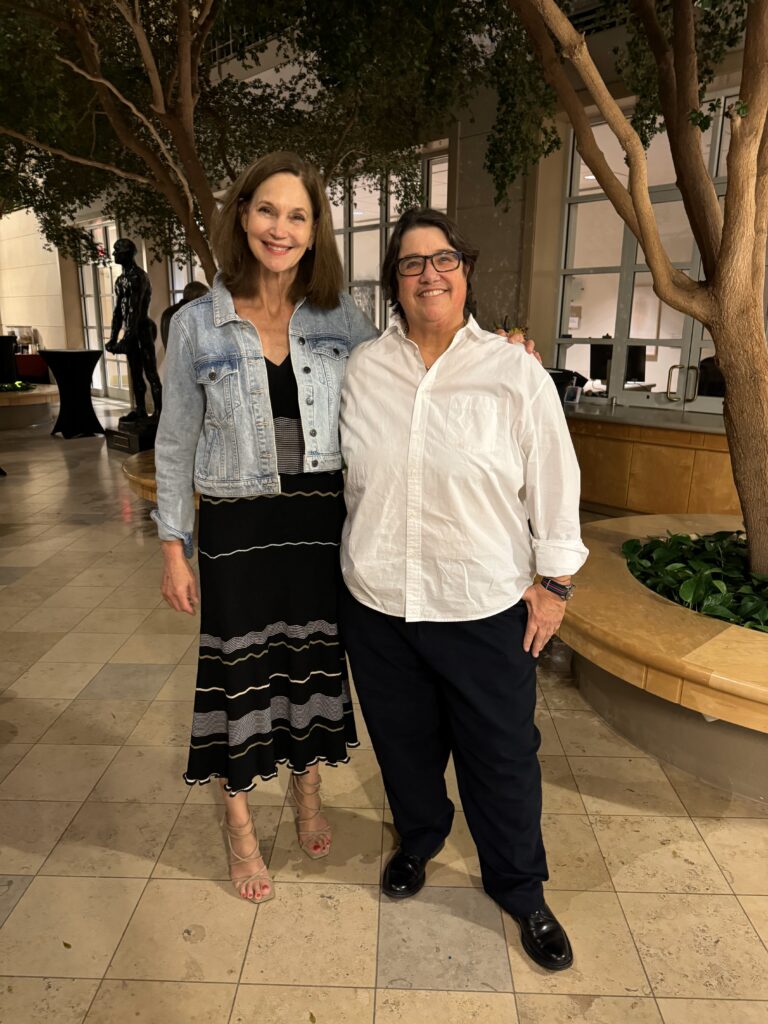A few weeks ago, artist Catherine Opie and curator Charlotte Cotton came to campus for the opening of Opie’s new exhibition Catherine Opie: In Dialogue. As part of their time on campus, Opie and Cotton led a fantastic discussion on the works displayed, followed by a reception. The next morning, Opie and Cotton joined students and faculty from a variety of backgrounds for a more intimate lunch and Q&A session.
I had the pleasure to sit with Opie at the Q&A and lunch. You can tell, straight from meeting her, that Opie is passionate about her work and also connecting with young people. She spoke candidly about her time as a professor at UCLA, where she took ample time with her undergraduate and graduate students to curate the next generation of artists to come from the program. This same sentiment fed into her time at Davidson. Opie took genuine care when discussing difficult issues with students leading up to the election.
During the talk, students asked a variety of incredibly thoughtful questions to the photographer and curator, including how does one do documentary photography for groups they do not identify with, how to not fetishize the subject, and how Opie depicts the queer body.
What stood out to me was Opie’s discussion of architecture-not just buildings and sites but bodies as well. Opie candidly spoke about her early series on queer bodies and how, for her, it was about creating her own “royal family” by depicting all of the people from within the community. She chose a different way to be radical, not by showing lots of skin or highlighting sexuality, but instead by taking a photo of the whole person, letting them be a part of the space and changing the focus from the constant sexualized nature of queer people to depicting them as a person.
The exhibition on display in the Van Every/Smith Galleries also takes on these themes of framing architecture, although without figural bodies. The works all come from her series 2020, when Opie traveled across the country taking photos in the wake of the murder of George Floyd, COVID-19, and the taking down of confederate monuments. In this series she presents diptychs of contrasting images to support dialogues.
When asked about how Opie is able to continuously make political, heavy works and constantly champion social justice, Opie was very honest. She described how it was also essential for her to step back and away from these series, to pivot and take time for herself in these troubling times. That is why she does not want to just be known as a social artist, taking breaks to explore landscapes and freeway photography. Leading up to the election in all of its anxiety, Opie encouraged that this does not need to be a constant fight; sometimes, the most you can do is recharge to be ready in these moments.
Charlotte Cotton also spoke candidly about the impact Opie’s work has had on herself and others, and the nature of Opie’s work to change its impact before and after major elections, such as the one which occurred just last week (after Opie and Cotton’s visit to campus). As In Dialogue hangs in the Van Every/Smith Galleries, this exhibition will be no different. These works, diptychs of highly divisive times, will change with how society shifts leading up to and after yet another contentious election.
– Sarah Willoughby ’25


